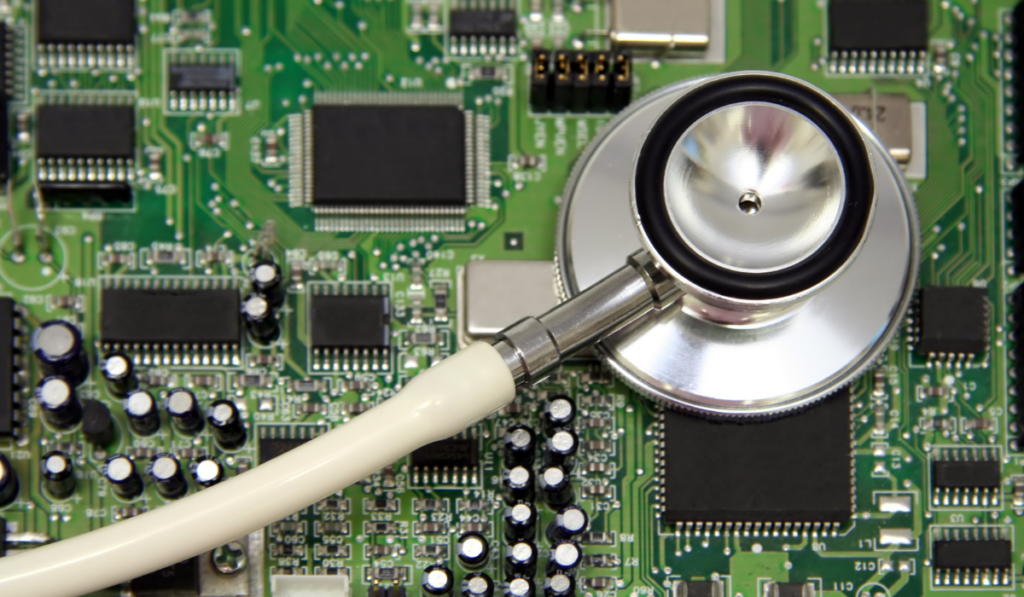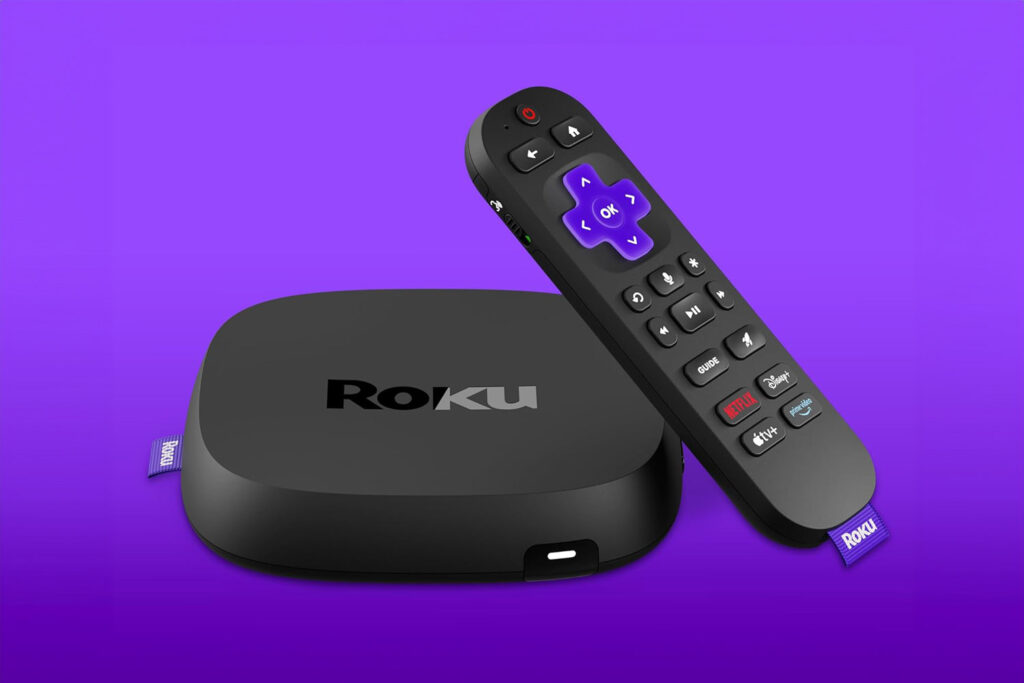As home theater experts, we know how frustrating it can be when your Roku won't connect to the internet, but all your other devices will. This issue affects all Roku devices, including streaming sticks, TVs, and streaming boxes. In this article, we'll explore the possible causes of this problem and provide solutions to help you get your Roku back online.
To fix a Roku that won't connect to the internet while other devices do, first power cycle the unit, and then swap to a 5 GHZ channel on your router if you have one available. If the problem continues, restart your router and reset your Roku's network settings before troubleshooting further.
With firsthand experiences and insights from fellow experts in the field, we're confident we can help you resolve any Roku connectivity issues you may encounter. So, let's dive in and get your home theater system up and running smoothly once again!
Fixing The Most Common Roku Connection Issues

First, let's just look at the most common Roku Connection issues that are more likely to be what you're suffering from. Here's a quick-reference table before we move on to some details:
| Issue | Possible Causes | Solutions |
|---|---|---|
| Weak Wi-Fi signal | – Out of range – Physical barriers | – Move Roku or router closer – Remove barriers, use Wi-Fi extender |
| Interference on 2.5 GHz channel | – Other devices using the channel | – Switch to 5 GHz channel on router (if available) |
| Random glitch | – Roku &/or router needs restarting – Network settings need updating on the Roku | – Restart Roku and/or router – Update network settings on Roku |
Checking Wi-Fi Network and Signal Strength
We have a separate guide on how to connect your Roku to Wi-Fi at all, but assuming you already had a connection that has stopped working, the issue may be that your signal strength has been reduced by more other devices joining the wireless network over time.
One of the most common issues is a weak Wi-Fi signal. Before troubleshooting, check your Wi-Fi network and signal strength. Make sure your Roku is within range of your Wi-Fi network and that there are no physical barriers, such as walls or furniture, blocking the signal.
To check your Wi-Fi signal strength, go to Settings > Network > Check Connection. If the signal strength is poor, try moving your router closer to your Roku or consider using a Wi-Fi extender. Or, head to a 5 GHZ channel!
Changing from a 2.5 GHZ to a 5 GHZ Router Channel
Another common issue is interference from other devices on the 2.5 GHz router channel. If you have a dual-band router, consider switching to the 5 GHz channel for better performance. This will reduce interference from other devices, such as smartphones and tablets, that are using the 2.5 GHz channel.
To change your router channel, consult your router's user manual or contact your internet service provider for assistance. Once you have switched to the 5 GHz channel, go to Settings > Network > Set up connection on your Roku and select your Wi-Fi network.
While we don't take up the mantle of diving into wireless tech troubleshooting on this blog, you can reference this guide on how to think about your wireless band options, and how to intentionally segregate them for better performance.
Local Network Issues: Power Cycle the Device & Router
Sometimes, power cycling your Roku and router can help resolve connection issues. To power cycle your Roku, unplug the power cord from the back of the device, wait 10 seconds, and then plug it back in. To power cycle your router, unplug the power cord from the back of the device, wait 30 seconds, and then plug it back in.
Quick 5-Step Troubleshooting List
If you're still having trouble connecting your Roku to the internet, don't worry. Here's a slightly more involved 5-step troubleshooting list to get you back up and running. If you already tried the most common issues above, skip to step 3 on this list:
- Check your Wi-Fi network: Make sure your Wi-Fi network is working properly and that you're within range of the router. Restart your router if necessary.
- Restart your Roku: Restart your Roku by going to Settings > System > System restart. You can also unplug the Roku device from the power source, wait a few moments, and then reconnect it.
- Check your network settings: Make sure your Roku is set up to connect to your Wi-Fi network. Go to Settings > Network > Set up connection and follow the on-screen instructions.
- Reset your network settings: If none of the above steps work, try resetting your network settings. Go to Settings > System > Advanced system settings > Network connection reset. Select Factory reset to restore all settings to the default.
- Contact Roku support: If you've tried all of the above steps and your Roku still won't connect to the internet, contact Roku support for further assistance.
Remember, these steps should be followed in order. Start with the first step and work your way down the list until your issue is resolved. In most cases, one of these steps should fix the problem.
We recommend purchasing a Wi-Fi extender, such as the TP-Link AC750 Wi-Fi Range Extender (on Amazon), if you're having trouble with your Wi-Fi network. This will help boost your signal and improve your connection.
More Advanced Troubleshooting Steps

If you've tried the basic troubleshooting steps and your Roku still won't connect to the internet, there are a few more things you can try. We are off in the weeds now, but, if you keep going, you'll find your solution.
Updating the Roku's Software
If your Roku's software is out of date, it may be causing connection issues. To update your Roku's software, go to Settings > System > System update. If there is an update available, click “Check now” and follow the on-screen instructions to update your Roku.
Updating Roku's Network Settings
If your Roku still won't connect to the internet, you may need to update its network settings. Go to Settings > Network > Set up connection and follow the on-screen instructions to update your network settings.
Checking Power and Connections
If your Roku is still having trouble connecting to the internet, check to make sure it's getting enough power and that all of its connections are secure. Make sure the power cord is plugged in properly and that all cables are connected securely.
Moving the Router Away
We already talked about when to move your router closer, but note that in some cases, if the router is right next to or on top of the streaming receiver, you may have signal issues as well, so make sure they're not TOO close.
How VPNs Can Disrupt ROKU's Wi-Fi Connection
Using a VPN (Virtual Private Network) on your router can cause issues with your Roku's Wi-Fi connection. When you use a VPN, it encrypts your internet traffic and routes it through a server located in a different location. This can cause your Roku to have difficulty connecting to the internet, as it may not be able to communicate with the server.
If you are experiencing issues with your Roku's Wi-Fi connection and are using a VPN on your router, try disabling the VPN and see if that resolves the issue. If it does, you may need to contact your VPN provider for assistance in configuring your router to work with your Roku.
Are You Use Roku on a Mobile Hotspot?
You can use your Roku on a mobile hotspot, but there are some things to keep in mind. First, using a mobile hotspot can quickly eat up your data plan, so be sure to monitor your usage closely.
Second, the speed and reliability of your mobile hotspot connection may not be as good as a traditional Wi-Fi connection, which can impact the quality of your streaming experience. This could be causing your Wi-Fi issues.
Last Resort: Factory Resetting Roku
If all else fails, you may need to factory reset your Roku. This will wipe all data from your device and restore it to its original settings. Keep in mind that this should be your last resort, as you will lose all your preferences, settings, channel downloads, and network information.
To factory reset your Roku, follow these steps:
- Press the Home button on your remote.
- Scroll up or down and select Settings.
- Scroll up or down and select System.
- Scroll up or down and select Advanced system settings.
- Scroll up or down and select Factory reset.
- Select Factory reset everything and follow the on-screen instructions.
After the reset is complete, you will need to set up your Roku device again, including connecting it to your network. If you still cannot connect to the internet, try using a different network or contacting Roku support for further assistance.
Contacting Roku Support
If you've tried all the troubleshooting steps and your Roku still won't connect to the internet, it's time to contact Roku support. Here's how to get in touch:
- Phone: You can call Roku support at 1-816-272-8106. They are available 24/7 to help you with any issues you may be having.
- Live Chat: If you prefer to chat with a representative, you can do so through the Roku website. Click on the “Chat” button in the bottom right corner of the page to get started. Note that you'll need to have an account and sign-in before you can access most support!
- Email: If you don't need immediate assistance, you can email Roku support at [email protected]. They typically respond within 24 hours.
When you contact Roku support, be sure to have your Roku device's serial number handy. You can find this by navigating to “Settings” > “System” > “About” on your Roku. This will help the representative quickly identify your device and troubleshoot the issue.
If your Roku is still under warranty, Roku support may be able to replace it for you. However, if it's out of warranty, you may need to purchase a new device.
Preventing Future Connection Issues
Now that you've successfully resolved the issue of your Roku not connecting to the internet, it's important to take some steps to prevent this from happening again in the future. Here are some tips to help you avoid future connection issues:
- Keep Your Roku and Router Updated: Make sure to keep your Roku device and router updated with the latest software and firmware updates. This can help prevent bugs causing connectivity issues.
- Reduce Interference: Interference from other electronic devices can cause connectivity issues. Keep your Roku away from other electronic devices like cordless phones, microwaves, or Bluetooth devices. You can also try changing the channel on your router to reduce interference.
- Reset Your Router Periodically: Monthly, unplug your router from the power source, wait 30 seconds, and plug it back in. This can help clear issues in the router that build up over time..
By following these tips, you can help prevent future connection issues with your Roku device.
Final Thoughts
In summary, it's essential to understand that your Roku device relies on a stable internet connection for a seamless streaming experience. Addressing common causes of connectivity issues, such as Wi-Fi signal strength, outdated software or firmware, router settings, and interference from other devices, can help you quickly resolve the problem.
By following the troubleshooting steps outlined in this article, as well as the preventative tips, hopefully you've been able to get back up and streaming!





